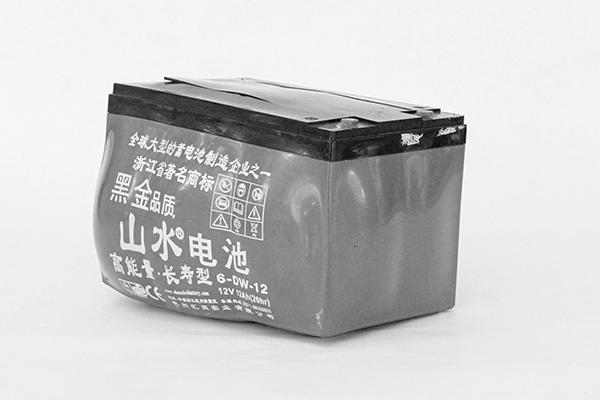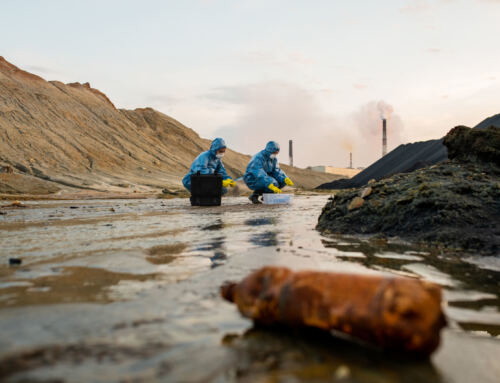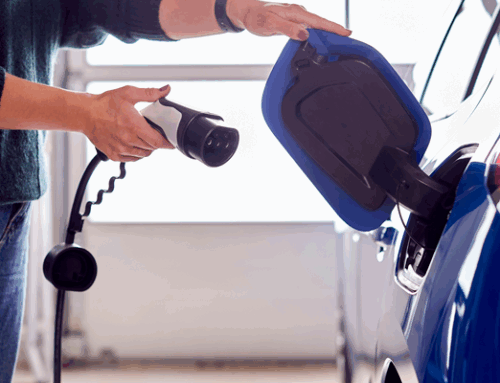There is a chance that you are reading this blog on your mobile phone or maybe on a laptop. Possibly not connected to a power source, but still on, powered by a battery. That battery will most likely be a lithium-ion battery (LIB), similar to those that power e-scooters, e-bikes, or electric vehicles. A quick glance into the news or a longer look at the newspaper archive will show several fires linked to the malfunction of this type of battery.
In this blog, we will dip into the fascinating yet dangerous world of thermal runaways – their causes, dangers, and presence in some of the most cutting-edge technologies of our time. We will glance at how this phenomenon has challenged the chemical industry, shaped the legislation landscape and how we are trying to mitigate the potential risks associated with them.

What are thermal runaways?
Thermal runaways are processes where an increase in temperature alters conditions in a way that causes a further increase in temperature, potentially leading to a destructive result. This spiraling escalation gives the process the runaway names – like a snowball rolling down a fill, growing larger and faster as the descent progresses.
But how does a thermal runaway occur? Thermal runaway reactions happen when an exothermic reaction can feed back into itself. Consequently, the reaction will generate heat, which further increases the temperature in the surroundings of the reactions, resulting in faster reaction rates.
This is what makes a thermal runaway potentially dangerous, its self-accelerating nature. Once the process has started, it is very hard to stop, and because of the physicochemical characteristics of the process, it can result in dramatic increases in temperature and pressure. The consequences of such process can be grievous, including fire and explosions.
Why do we care about thermal runaways?
The chemical industry is familiar with thermal runaways. Some of the most significant accidents have been linked to such processes, and certain types of reactions, like polymerization and decomposition, are particularly susceptible.
However, more recently, there has been an uptake in reported thermal runaways in an entirely different field: batteries, especially in electric vehicles (EVs), e-scooters, and e-bikes. For example, the BBC reported that every two days just in the city of London, a fire linked to an e-scooter or e-bike occurs, which is a 60% increase in just one year. In July 2023, a fire broke out in a ship transporting 3000 vehicles from Germany to Egypt off the Dutch coast, resulting in one death, several injuries, and the ship being evacuated. The growing concerns about the safety of LIBs have resulted in pressure from Non-Governmental Organizations (such as Electrical Safety First) to the current UK Government to introduce mandatory third-party approval for the vehicles’ batteries.
Between 95 and 99% of the total amount of batteries used for transport are lithium-ion batteries (LIBs). However, LIBs are also susceptible to thermal runaway processes. Sitting between the anode and the cathode, the electrolyte is the medium through which ions can travel. However, this substance is usually an organic salt, such as ethylene carbonate. This molecule is susceptible to decomposition processes resulting in the production of flammable organic gases that accumulate in the interior of the batteries, evidenced by the deformation of the batteries. Simultaneously, the cathode, typically containing metal oxides (such as cobalt oxide), can also undergo decomposition reactions, generating oxygen. Combining the heat released by the charge/discharge process and the accumulation of organic gases is the perfect recipe for fires. LIBs have been dominating the news in the last months.
What are we doing to increase battery safety?
LIBs are not perfect, and the reported accidents linked to fires is a good proof of this. However, manufacturers and developers continuously try to improve the safety of batteries. Calorimetry is an excellent tool for this. Testing the battery under the working conditions in which charge/discharge cycles occur is essential. Testing under the worst possible scenario also needs to be tested, including physical damage to the battery, enforced short-circuits, and overheating. Testing conditions should include discharged batteries but also full charge.

Applications such as heat-wait-search (HWS) prove invaluable for this objective. This method consists of placing the battery in calorimeters. The calorimeter is equipped with heaters that progressively increase and maintain the temperature. When the threshold for the runaway reaction occurs, the equipment’s temperature probes detect the temperature increase (exotherm). That is the value the battery should never reach to avoid dangerous situations, including storage.
Apart from testing, it is fundamental that batteries are equipped with tools that can prevent dramatic failure. One of the most extended ways to avoid this is using separators. In LIBs, separators act as a physical barrier between the anode and the cathode but allow the movement of lithium ions. When the battery overheats and it is a risk of a thermal runaway, separators change, preventing any further movement of ions and therefore stopping the chemical reactions inside the battery.
Research into alternative electrolytes has resulted in recent advances in solid-state batteries. Other materials, such as ceramic or glass, are utilized instead of using a liquid, potentially flammable substance as an electrolyte. These still permit the movement of lithium ions, but they show significant advantages, like higher chemical stability, avoiding decomposition reactions, and the production of flammable gases.
Looking into the future
Understanding and preventing thermal runaways becomes increasingly critical in a world shifting towards electrification and larger energy storage needs. We regularly see how LIBs’ challenges in terms of safety cannot be overlooked.
However, as we look ahead, there is hope in the advances of technology and innovation, trying to create a safer and more sustainable world. With rigorous testing procedures, such as calorimetry, we are more capable of understanding the conditions that trigger hazardous conditions for the batteries, such as high temperature and physical damage. Moreover, research continuously yields innovative solutions to create safer batteries, such as adding separators and, more recently, using solid-state batteries. These advancements show our capacity to innovate and our responsibility to create sustainable and safe solutions for the future. The challenge of thermal runaway is indeed significant, but it is one that we are learning to meet with creativity, diligence, and a spirit of continuous improvement.







